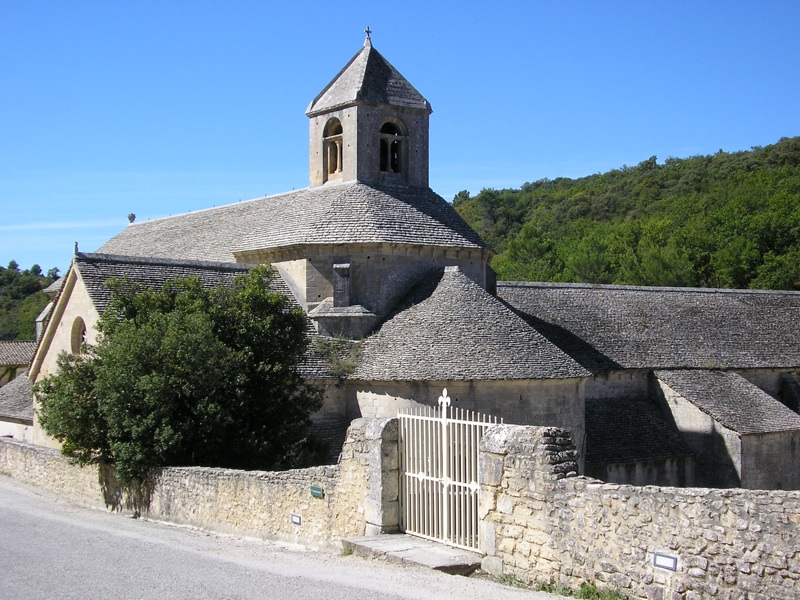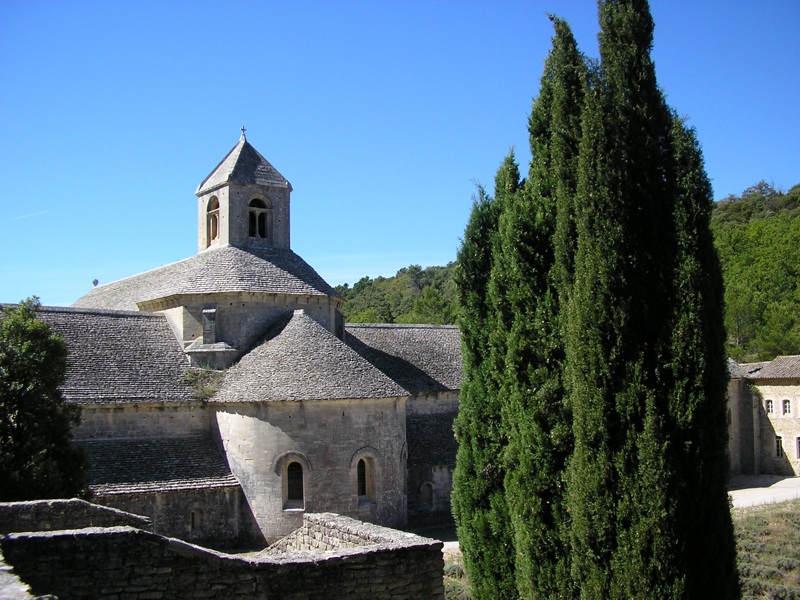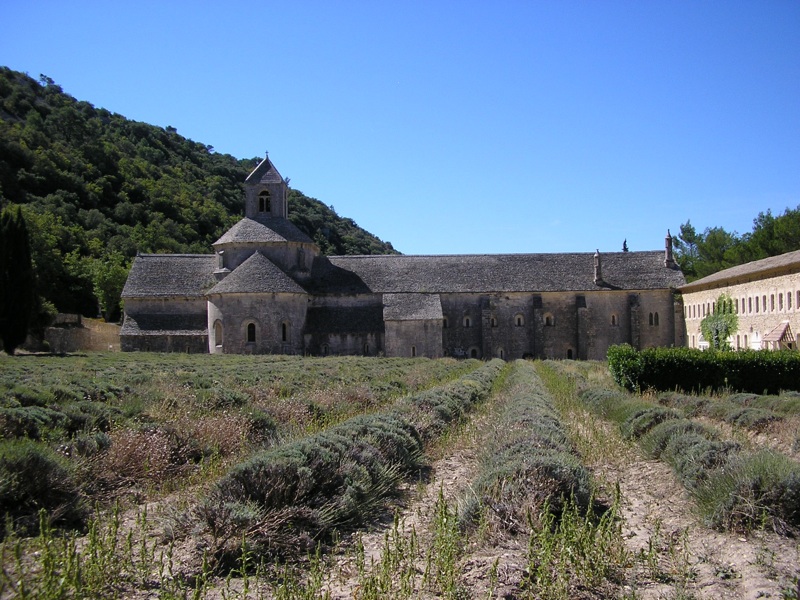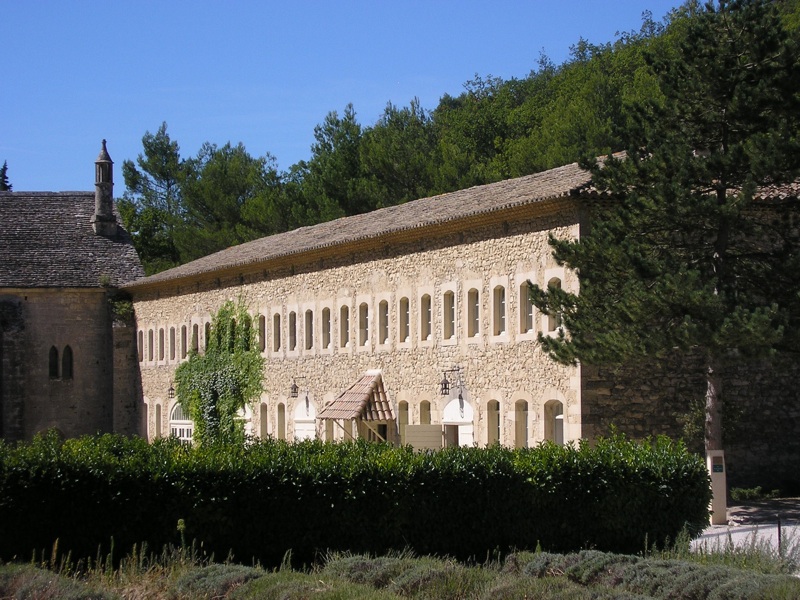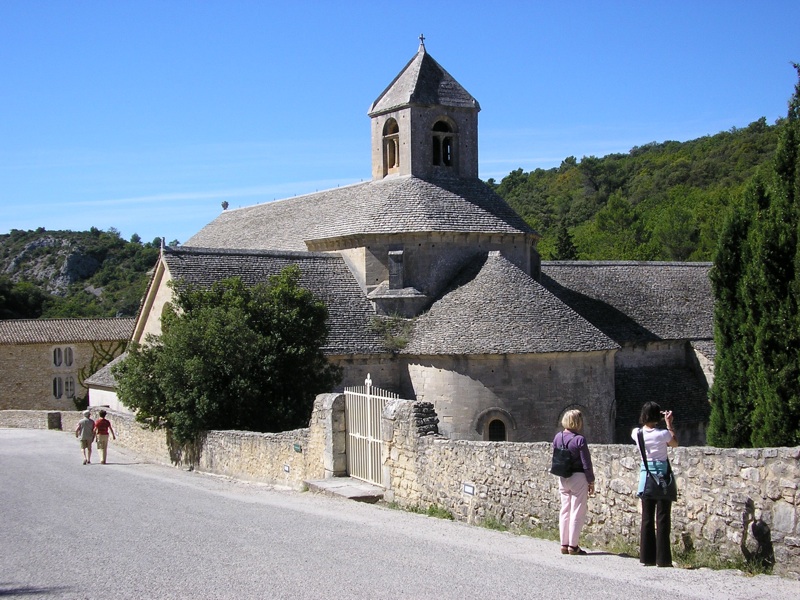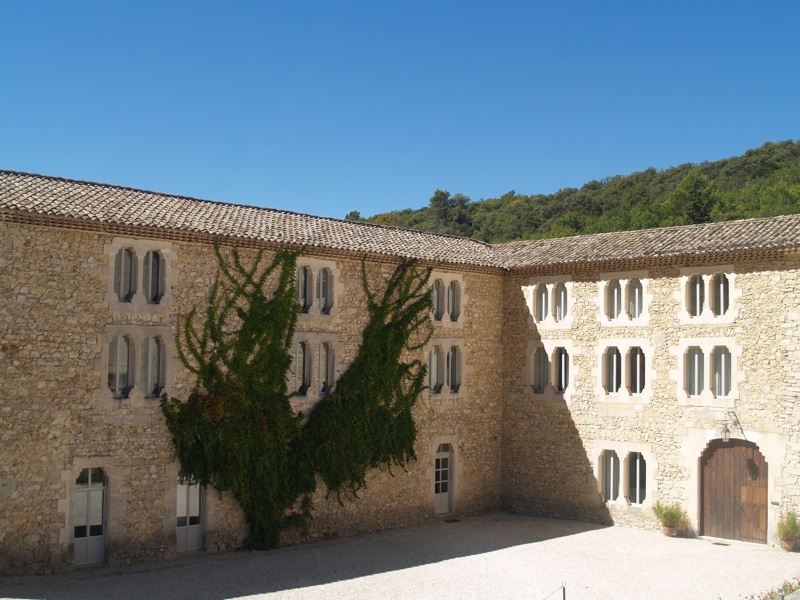 , approx. 4 km north of Gordes, considered an outstanding architectural monument Romanesque, but also famous for the lavender fields that are cultivated by monks.
, approx. 4 km north of Gordes, considered an outstanding architectural monument Romanesque, but also famous for the lavender fields that are cultivated by monks. One of the three - apart from the Silvacane and Thoronet abbeys - the most important Cistercian abbeys in Provence. It was founded in 1148; in 1160, the construction of the church (consecrated in 1178) and other buildings began.
The heyday of the abbey, which the monastery owed, inter alia, numerous donations from wealthy families in the region, falls in the thirteenth and fourteenth centuries. At that time, the monks owned several estates, farms, mills, etc. Later, the abbey began to decline, few monks remained (at the end of the 17th century there were supposedly only two); during religious wars it was partially destroyed, partially looted, finally nationalized during the Revolution, and then sold into private hands.
The entire abbey complex is open to the public (several guided tours daily). It is believed that the architecture of the complex is characterized by an exceptional simplicity and purity of the Romanesque form. Also of note are the roofs, partially covered with flat stones - lauzes - the same as those used to build houses in the nearby Villages des Bories.
It is best to visit Sénanque in high summer, when great lavender fields are blooming around the abbey.
